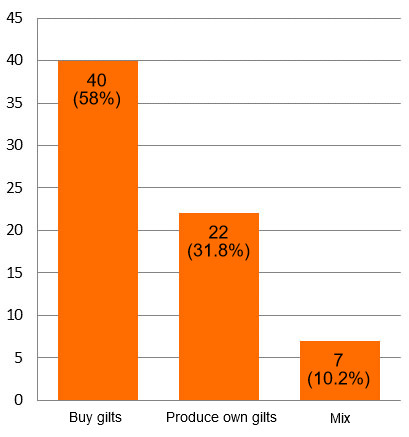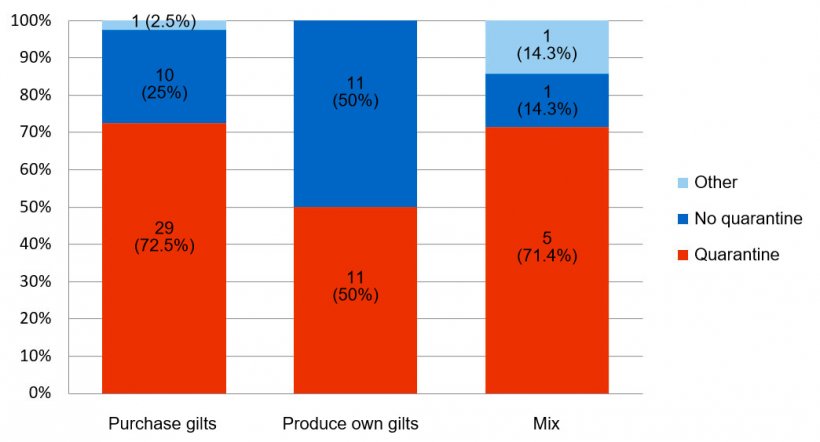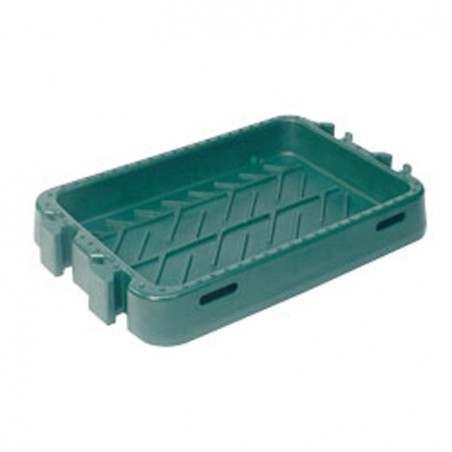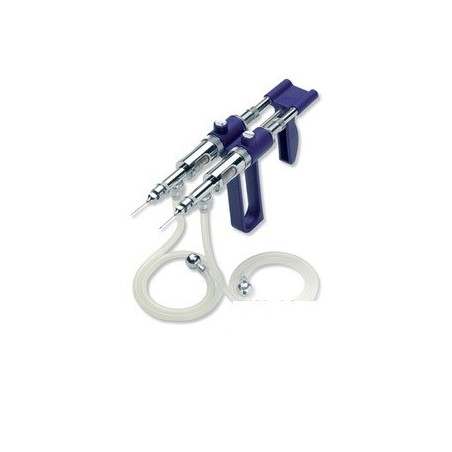Introduction
Porcine reproductive and respiratory syndrome virus (PRRSV) is causing major problems in the swine industry worldwide, including Denmark. After infection with PRRSV, or vaccination with a modified-live vaccine (MLV) against PRRSV, the pigs will contract a prolonged viremia, and will thus be able to transmit the virus to PRRSV-naïve pigs. Danish recommendations for PRRS-positive farms are to introduce replacement gilts after a quarantine period of 12 weeks subsequent to exposure to a wildtype virus or vaccination with an MLV approved for use in gilts. In many herds, it is practically impossible to manage a quarantine period for 12 weeks.

The aim of the present study was to compare the use of PRRSV MLV and quarantine facilities with the PRRSV status of replacement gilts at first insemination. Furthermore, the study evaluated the levels of antibodies, relative to the time of vaccination with PRRS MLV, and the age of the animals upon vaccination.
Materials and Methods
The study was performed as a cross-sectional study, including 69 Danish PRRS-positive sow herds. Five blood samples from replacement gilts were taken at first insemination at each farm and analysed by RT-qPCR, ELISA and IPMA using in house diagnostic tests. A questionnaire regarding information about gilt recruitment strategy, vaccination strategy etc. was also completed.
The status of the replacement gilts was compared to the use of quarantine, the duration of quarantine and the gilt recruitment strategy (whether they produced their own gilts or bought them in). Antibody levels measured by ELISA and IPMA were compared to time from vaccination with PRRS MLV, and the age of the animals when vaccinated.

Figure 1. Gilt recruitment strategies in the 69 herds.

Table 1. Data from farms with quarantine facilities (n=46).
| Quarantine facilities | Yes | No | Total |
| Does the quarantine share air with the other sections? | 25 (54.3%) | 21 (45.7%) | 46 (100%) |
| Is there a separate entrance to the quarantine? | 30 (66.6%) | 15 (33.3%) | 45a (100%) |
| Is the quarantine empty before new animals are introduced? | 27 (58.7%) | 19 (41.3%) | 46 (100%) |
aOne missing answer
Results
Of the 69 herds, 40 (58 %) bought gilts whereas 22 (32 %) produced their own gilts. Seven herds (10 %) used both strategies (Figure 1). More than 70 % of the herds that bought gilts, used quarantine, whereas only 50% of the herds that produced their own gilts used quarantine (Figure 2). However, only in 10 herds the quarantine was defined as “optimal” (Table 1). The length of the quarantine period was from 8-16 weeks in the herds with “optimal” quarantine facilities.

The results of the laboratory tests were used to classify each group of gilts on each farm into ‘stable’ (n=63) or ‘unstable’ (n=6). Being stable was defined by being negative by RT-qPCR and positive by ELISA.
All of the tested gilts were negative by RT-qPCR, and in six herds there were gilts that tested negative for antibodies against PRRSV, and was thereby defined as unstable.
There was no significant difference (α=0.05) between the stable and unstable groups regarding the use of quarantine, duration of quarantine, gilt recruitment strategy, number of suppliers, and number of deliveries of replacement gilts. However, there was a tendency that the use of a quarantine resulted in stable gilts. There was no significant correlation between the age at vaccination and the level of antibodies at first insemination.
Discussion
A higher number of viremic replacement gilts were expected especially in herds without quarantine. However, based on available literature, the duration of viremia after vaccination with MLV is on average 4 weeks and the estimated time from vaccination to insemination (when blood samples were taken) was on average 18 weeks in the present study and therefore it was not surprising that no gilts were viremic. Six (8.7%) farms had antibody negative replacement gilts, meaning that either that the gilts were not immunised against PRRSV at first insemination or that the antibodies elicited in response to vaccination had decreased to below the detection limit. All of these six herds vaccinated gilts prior to mating with an MLV, and therefore this finding was unexpected since the antibodies elicited in response to vaccination should last for more than 18 weeks. Naïve gilts are at risk of being PRRSV infected during pregnancy and by that may act as a source of virus transmission in the farrowing unit.
Conclusion
The present study showed that in 69 PRRSV positive Danish sow herds, no replacement gilts were viremic at first insemination despite that very different and in most cases suboptimal acclimation strategies were used. Nevertheless, introducing consecutive batches of naïve gilts into a sow herd can eventually generate a subpopulation of breeding animals sensitive to PRRSV infection, and clinical outbreak. Thus, it is necessary to monitor the efficacy of gilt immunization in PRRSV positive stable farms.








